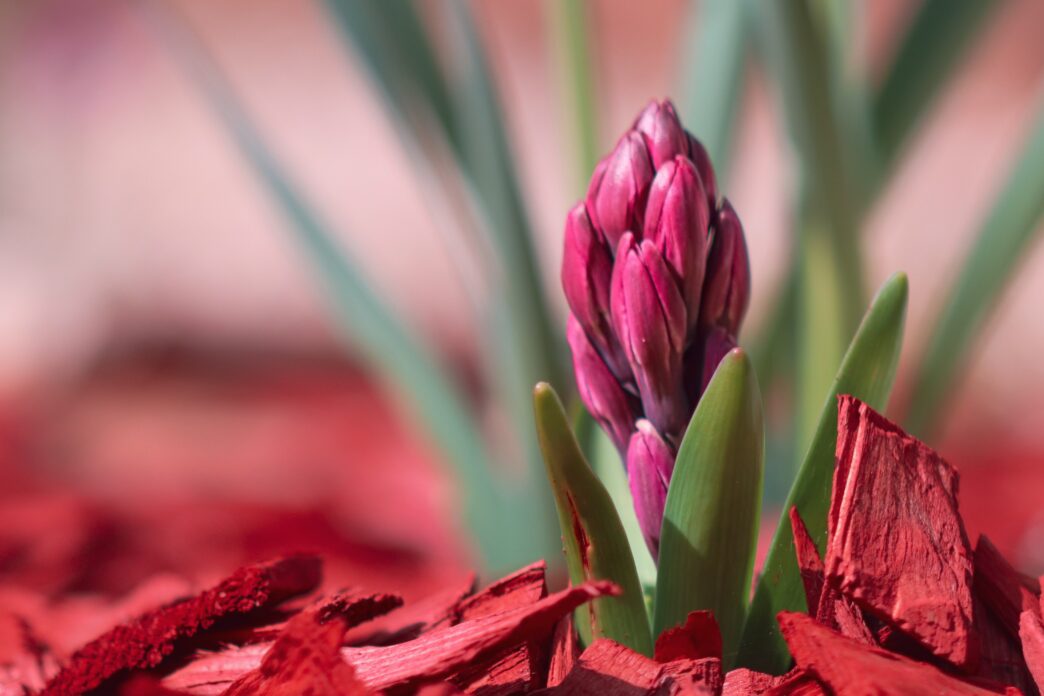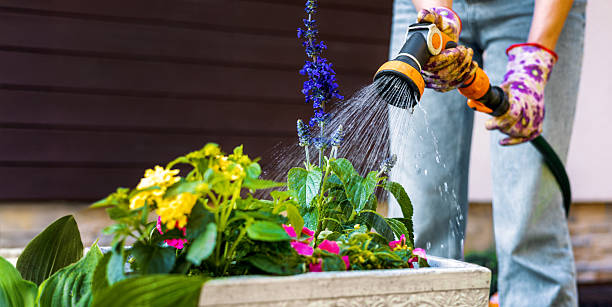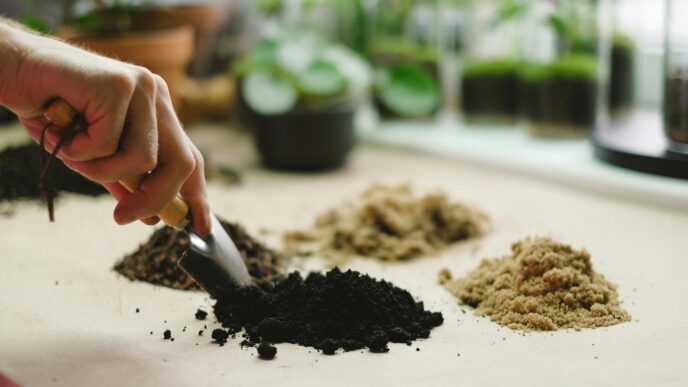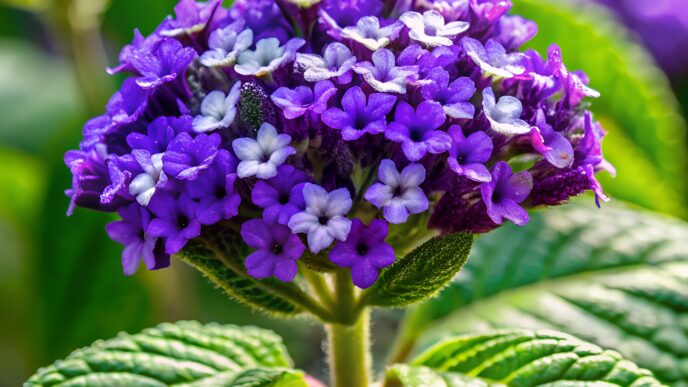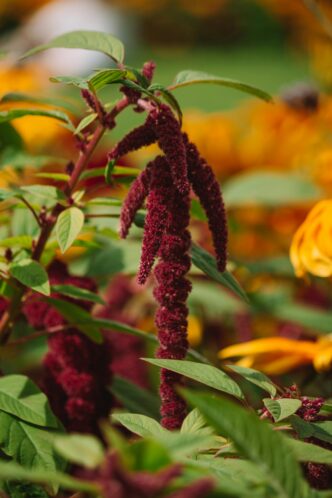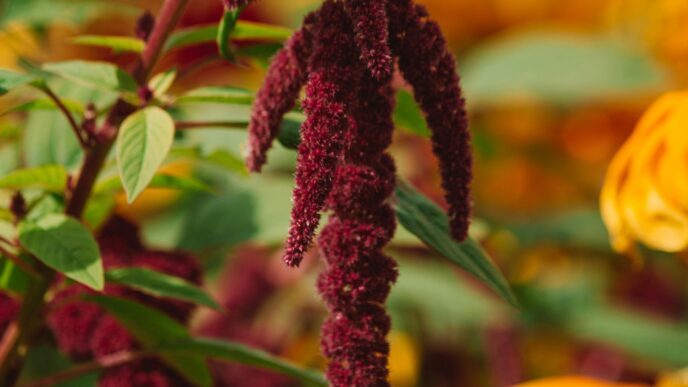Mulching is one of the most valuable techniques in gardening. Whether you’re growing vegetables, flowers, shrubs, or trees, mulch helps create the perfect environment for plant growth. By covering the soil with a protective layer of organic or inorganic material, you’re giving your plants a shield against weeds, heat, cold, and moisture loss.
But not all mulches are created equal, and how you apply them matters. In this guide, we’ll dive into the types of mulch, their benefits, step-by-step application, common mistakes, and seasonal tips so you can mulch your garden the right way.
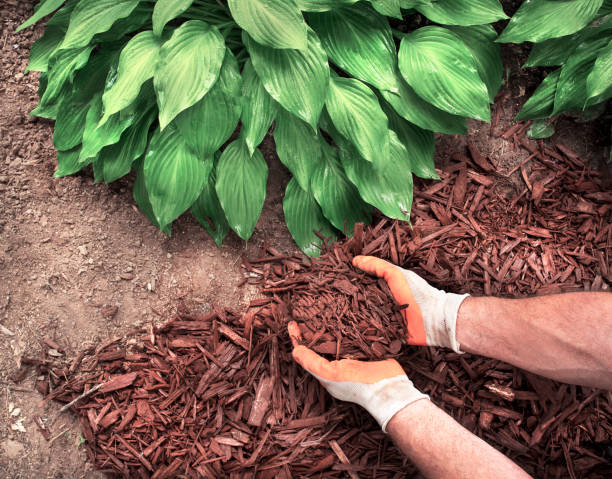
🌱 Why Mulch Is Essential for Plant Health
- Moisture Retention – Mulch slows evaporation, meaning less watering is required.
- Weed Suppression – Blocks sunlight from reaching weed seeds.
- Soil Temperature Regulation – Keeps roots cool in summer and insulated in winter.
- Nutrient Enrichment – Organic mulches break down, releasing nutrients into the soil.
- Soil Protection – Prevents erosion from wind and heavy rains.
- Improved Soil Structure – Encourages earthworms and microbes that aerate the soil.
- Aesthetic Value – Creates a tidy, uniform look in beds and borders.
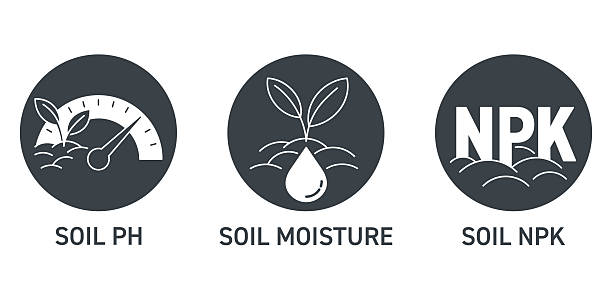
🌿 Types of Mulch and Their Uses
1. Organic Mulches (Biodegradable – improve soil as they decompose)
- Wood Chips & Bark: Long-lasting, attractive, best for trees and shrubs.
- Compost: Nutrient-rich, great for vegetable gardens and flower beds.
- Straw & Hay: Excellent for vegetable beds, keeps soil moist and prevents muddy fruit.
- Grass Clippings: Free and effective, but apply thin layers to prevent matting.
- Leaves & Leaf Mold: Add nutrients and improve soil structure.
- Coconut Coir: Eco-friendly, lightweight, and holds moisture well.
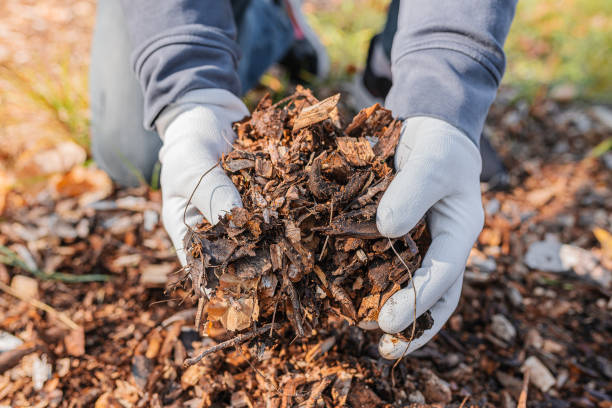
2. Inorganic Mulches (Non-biodegradable – long-lasting, decorative)
- Gravel & Pebbles: Best for rock gardens, succulents, and cacti.
- Landscape Fabric: Suppresses weeds but may limit soil health over time.
- Plastic Sheeting: Retains heat, good for crops like tomatoes and melons.
- Rubber Mulch: Durable, used in playgrounds and pathways, but not soil-friendly.
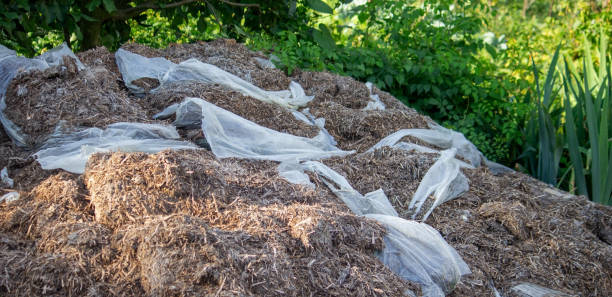
🌸 How to Mulch Your Garden the Right Way
Step 1: Prepare the Soil
- Remove weeds and grass.
- Loosen compacted soil with a fork or hoe.
- Water the soil deeply before mulching.
Step 2: Apply the Mulch
- Spread mulch 2–4 inches deep around plants.
- Keep a 2–3 inch gap around plant stems and tree trunks to prevent rot.
- Apply evenly, avoiding thick piles.
Step 3: Maintain the Mulch
- Replenish organic mulch once or twice a year as it decomposes.
- Fluff or rake mulch occasionally to prevent compaction.
- Watch for pests (like slugs) hiding under mulch and take preventive measures.
🌻 Seasonal Mulching Tips
Spring
- Apply mulch to lock in soil moisture before summer heat.
- Use compost or shredded bark for vegetables and perennials.
Summer
- Replenish mulch in dry spells to protect against drought.
- Straw works especially well for vegetable beds.
Fall
- Add mulch after the first frost to insulate plant roots.
- Leaves and wood chips are excellent choices for winter protection.
Winter
- Mulch tender perennials and young trees for frost protection.
- Avoid heavy mulching in areas prone to rodents, as they may shelter underneath.
🌾 Best Mulch Choices for Different Gardens
- Vegetable Gardens: Straw, compost, shredded leaves.
- Flower Borders: Bark chips, compost, leaf mold.
- Fruit Trees: Wood chips, hay, or compost.
- Herbs & Rock Gardens: Gravel, pebbles, or sand.
- Containers: Small bark chips, pebbles, or coco coir.
🌼 Common Mulching Mistakes to Avoid
- Volcano Mulching – Piling mulch against tree trunks causes bark rot.
- Too Much Mulch – Over 4 inches thick can suffocate roots.
- Using Fresh Wood Chips – Can deplete nitrogen as they decompose.
- Ignoring Soil Health – Mulch doesn’t replace the need for compost or fertilizer.
- Using Contaminated Mulch – Hay or grass treated with herbicides may harm plants.
🌟 Quick Comparison: Organic vs. Inorganic Mulch
| Type | Pros | Cons | Best Uses |
|---|---|---|---|
| Organic | Improves soil, eco-friendly, adds nutrients | Needs replenishing, may attract pests | Veggie gardens, flower beds, borders |
| Inorganic | Long-lasting, low-maintenance | Doesn’t enrich soil, may overheat roots | Pathways, rock gardens, decorative areas |
🌿 FAQs About Mulching
Q1: When should I mulch my garden?
Spring and fall are best, but mulch can be applied year-round depending on your needs.
Q2: How thick should mulch be?
2–4 inches is ideal. Less won’t suppress weeds, more may harm roots.
Q3: Is mulch good for all plants?
Yes, but choose the right type. For example, acid-loving plants thrive with pine bark, while herbs prefer gravel.
Q4: Can mulch attract pests?
Organic mulch can harbor slugs or insects, but proper spacing and good garden hygiene reduce risks.
✅ Final Thoughts
Mulching is one of the easiest ways to improve your garden. By choosing the right mulch and applying it correctly, you’ll enjoy healthier soil, fewer weeds, and stronger plants all year round. Remember: the best mulch depends on your garden’s needs—vegetables thrive with straw or compost, while decorative borders look stunning with bark or gravel.
With just a few inches of mulch applied the right way, your garden can stay vibrant, resilient, and beautiful through every season.

